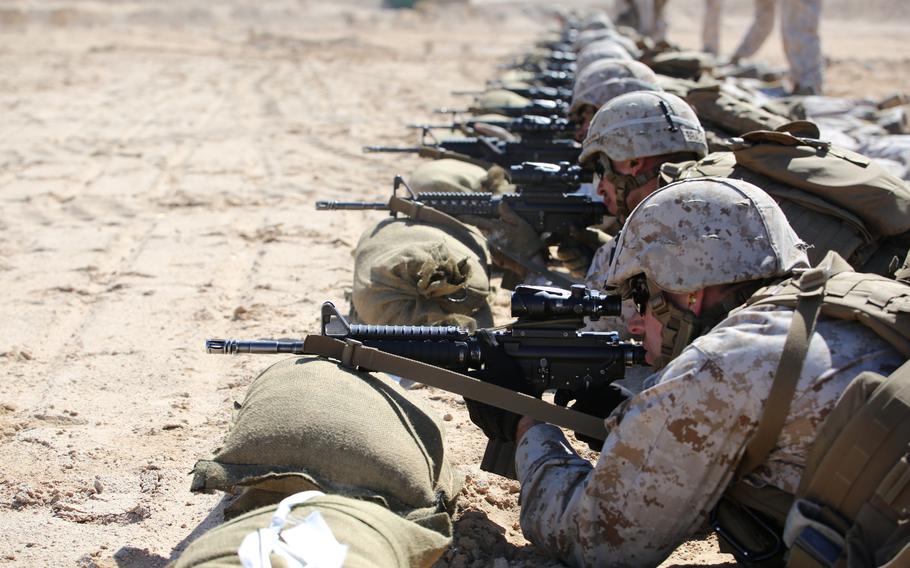
Marines at a firing range at Marine Corps Air Ground Combat Center, Twentynine Palms, Calif., in February 2015. (Alicia R. Leaders/U.S. Marine Corps)
WASHINGTON — The Marine Corps is shrinking all infantry battalions to 811 troops by Sept. 1, the service announced Monday as part of an annual update of its Force Design restructuring.
In 2020, the Marines began working to implement their Force Design 2030 initiated by Gen. David Berger, the service commandant. This is the service’s plan to modernize the force and shed outdated practices and strategies.
The plan includes developing new equipment and restructuring on multiple levels so Marines can better respond to near-peer threats, such as China and Russia. Some of the changes to the service include more mobile fighting formations, getting rid of hundreds of tanks and cutting back on towed cannon artillery and significant numbers of helicopter units.
“One of the big shifts we did this year is we said divestments are complete,” Brig. Gen. Stephen Lightfoot, director of capabilities development for the Marine Corps, told reporters on Friday ahead of the update’s release. “We are no longer looking to figure out what do we need to get rid of in order to modernize.”
The Marines began their Battalion Infantry Experimentation in 2020 working to create smaller formations that were more capable of distributed operations. Battalions now consist of about 900 Marines. The service used three existing battalions to test various configurations. There were 13 “live-force experiments” ranging in places from the Appalachian Mountains to the jungles of Okinawa. During this testing, there was one battalion with 735 Marines.
“These experiments demonstrated that a battalion of 735 Marines — the initial planning factor — was not operationally suitable,” Berger wrote in the update. “We have since adjusted the size of our battalions to 811 Marines.”
The Marines settled on battalions of 811 troops last year but continued to keep experimenting and conduct a second phase of the experiment, said Brig. Gen. Kyle Ellison, commander of the Marine Corps Warfighting Lab. This phase is underway and focused on the 3rd Battalion, 4th Marines based at Marine Corps Base Twentynine Palms in California.
The second phase will primarily consist of focusing on sustainment, sensing, lethality and C5ISRT, which stands for command, control, computing, communications, cyber, intelligence, surveillance, reconnaissance and targeting.
“The conduct of our campaign of learning and the way in which we organize to design and develop the future force have grown in recent years. This improvement must continue,” Berger wrote. “We must build on our ability to innovate for the future while delivering capabilities to the warfighter today.”
Berger, who took over as commandant in 2019, will retire in the summer. He has faced a range of reactions for his redesign plans, from criticism from retired Marine leaders to support from Congress for the overhaul.
Gen. Eric Smith, the Marine Corps’ second highest ranking officer, has been selected to be the next commandant.